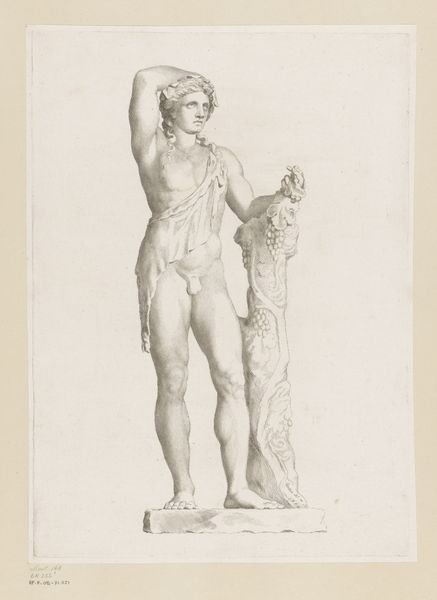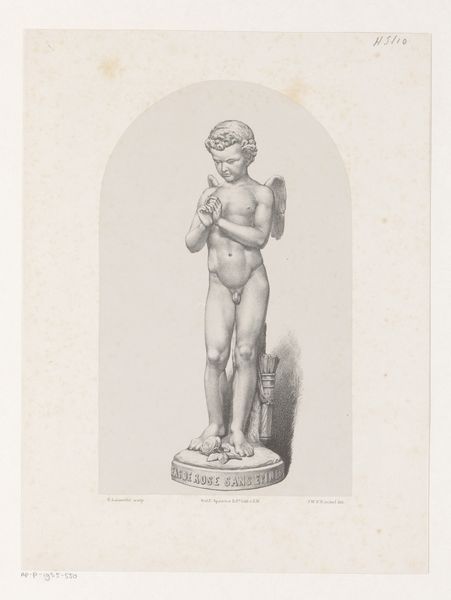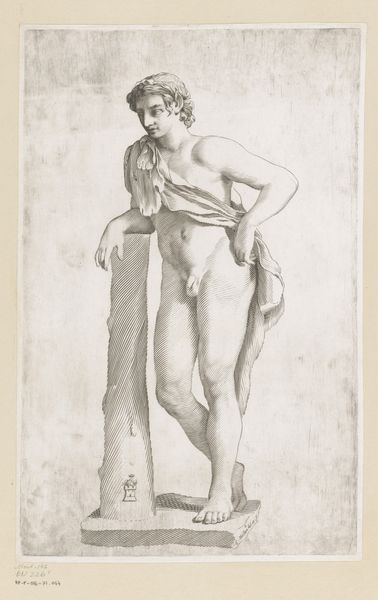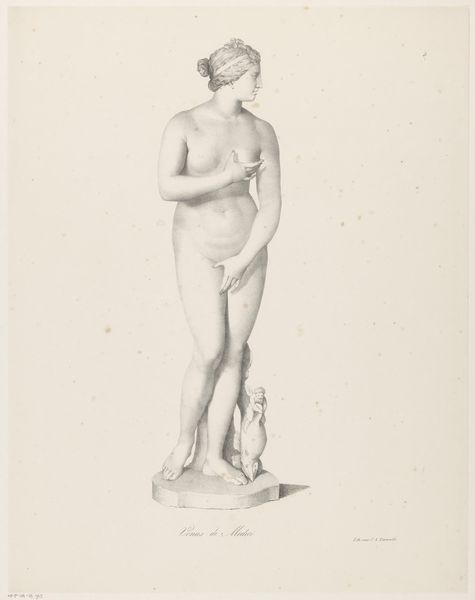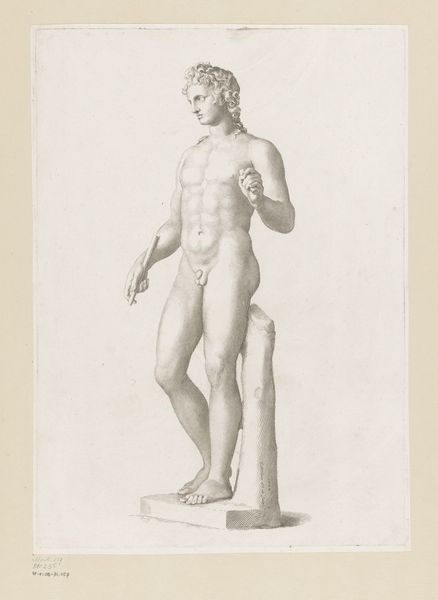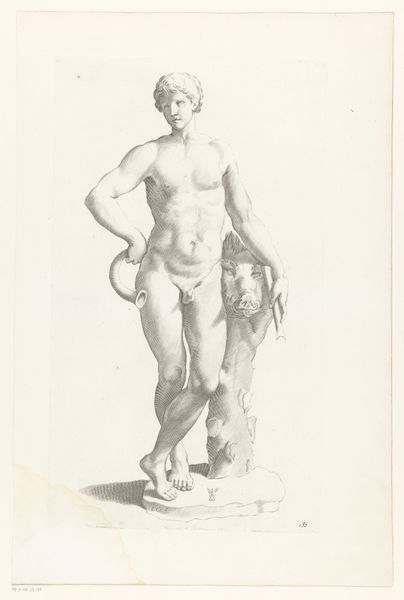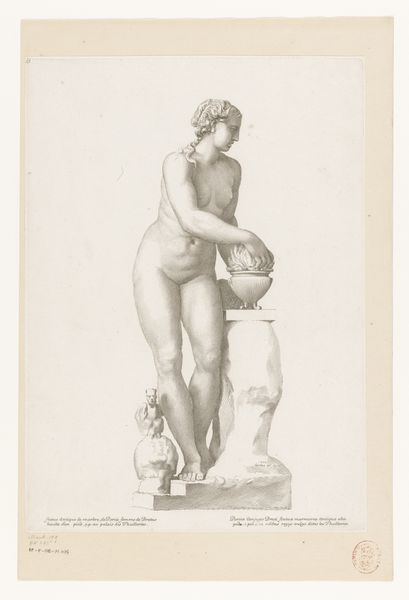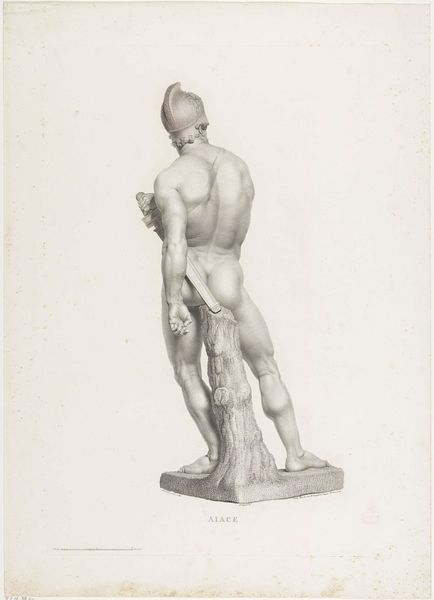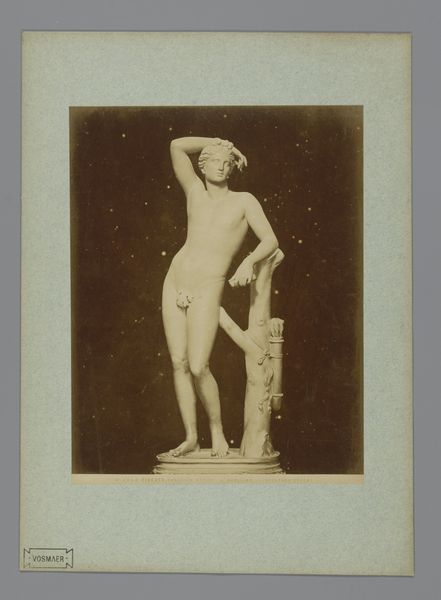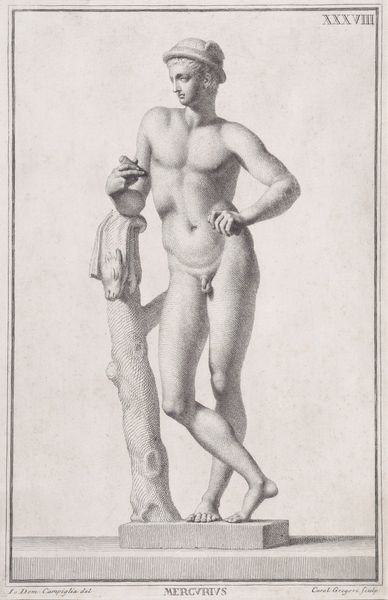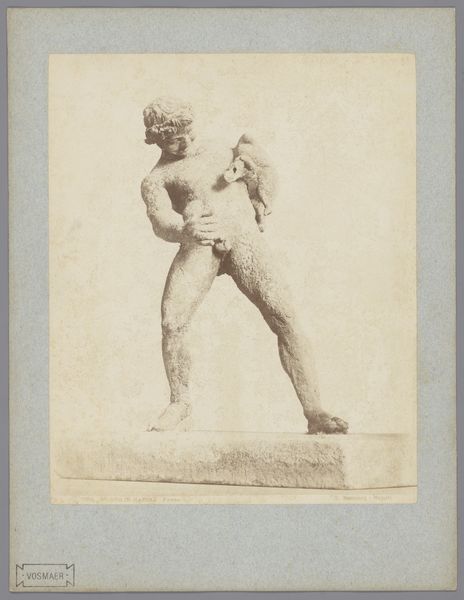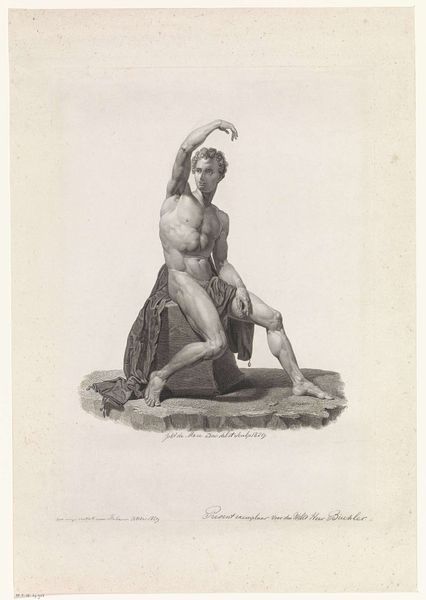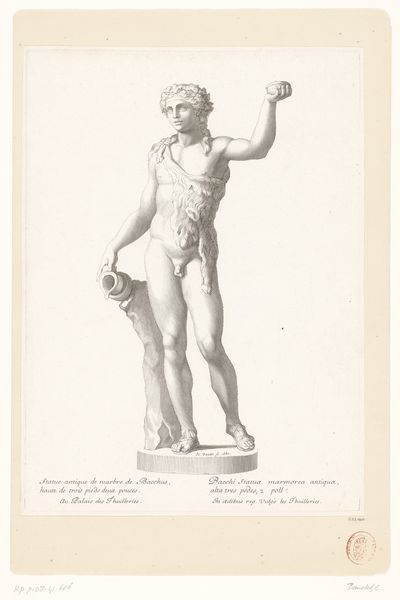
Dimensions: height 365 mm, width 241 mm
Copyright: Rijks Museum: Open Domain
Editor: This is Jean Théodore Joseph Linnig's "Statue of Apollo," created in 1839 using pencil and graphite. The figure's relaxed pose contrasts intriguingly with the powerful physique. What draws your eye when you look at this drawing? Curator: Initially, it is the interplay of line and volume. Note the precise control of the graphite, building form meticulously. Observe how the artist models the musculature through subtle gradations of tone rather than stark contrast. Editor: So, it's more about the technique than the subject itself? Curator: The subject provides a vehicle for the technique to manifest. We see Linnig engaging with classical ideals – Apollo, the epitome of masculine beauty – but interpreting him through the objective lens of draftsmanship. Ask yourself how the drawing operates as a self-contained system of representation? Editor: I guess I hadn't really thought about the 'system' part, I was too busy thinking 'statue' versus 'drawing.' I now understand better what you mean about looking at its inherent qualities. Curator: Indeed. Think about how the textures are rendered - the smoothness of the skin versus the rough surface of the tree. These create a dynamic relationship within the composition itself. We can appreciate it without deeper symbolic interpretations, if we so choose. Editor: It's like he’s showcasing his skills as a draughtsman while also hinting at Apollo’s power through subtle visual cues. Thanks, this has made me appreciate the drawing a lot more! Curator: Precisely. And perhaps we both leave having gained a clearer focus of that dynamism in drawing.
Comments
No comments
Be the first to comment and join the conversation on the ultimate creative platform.
